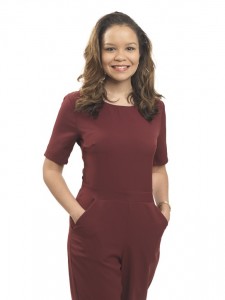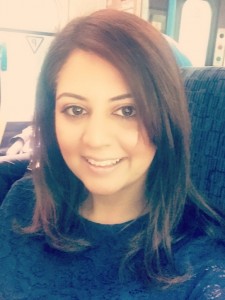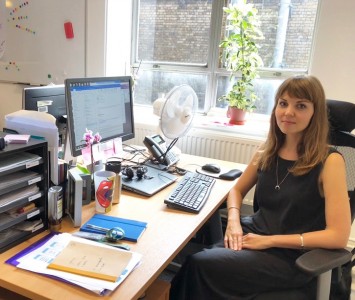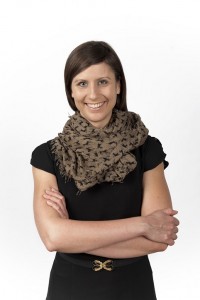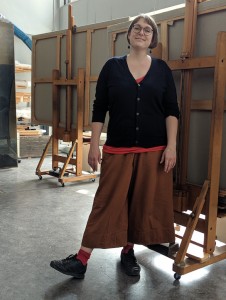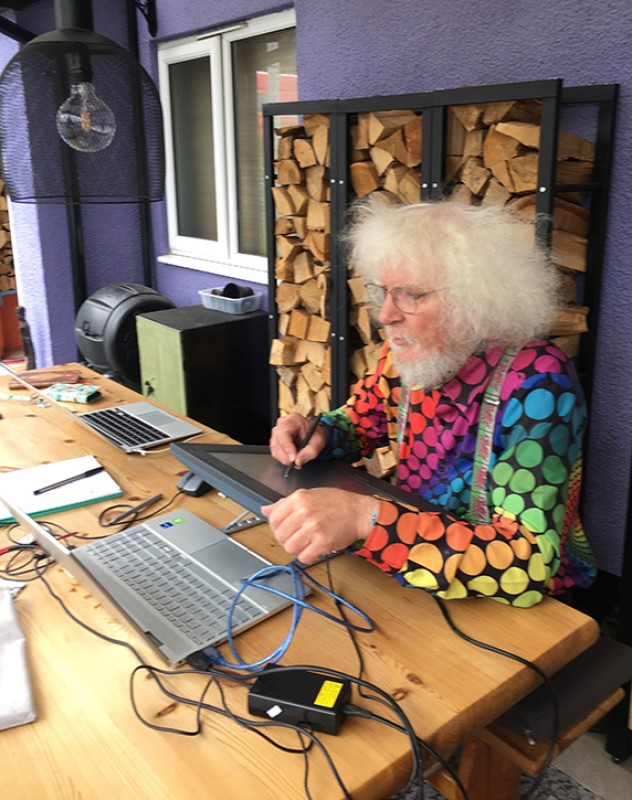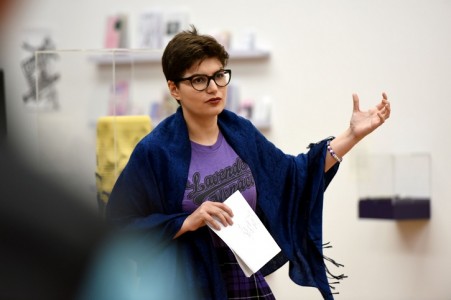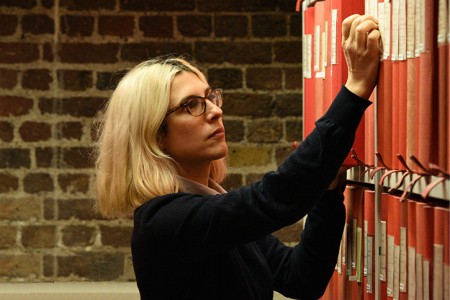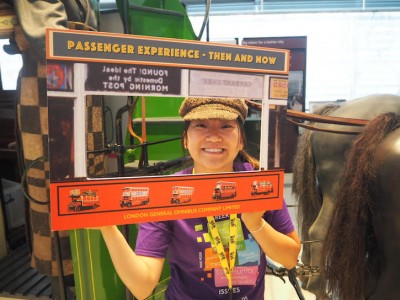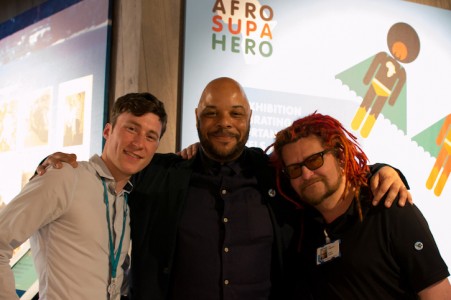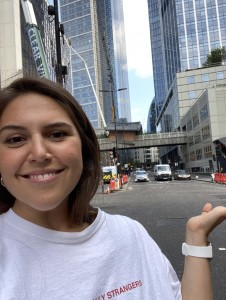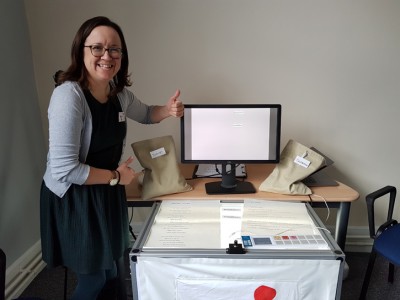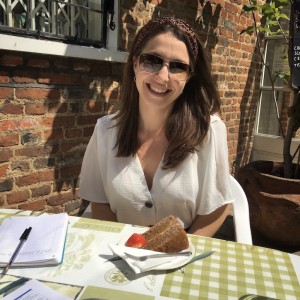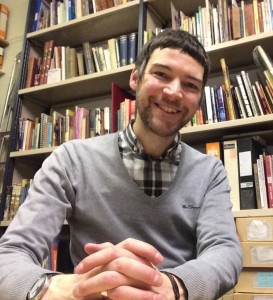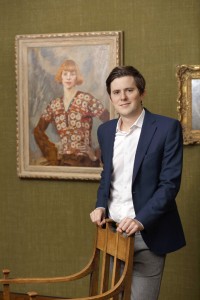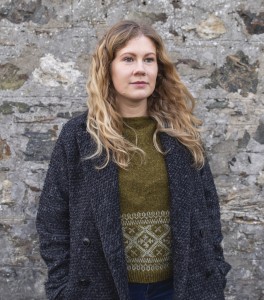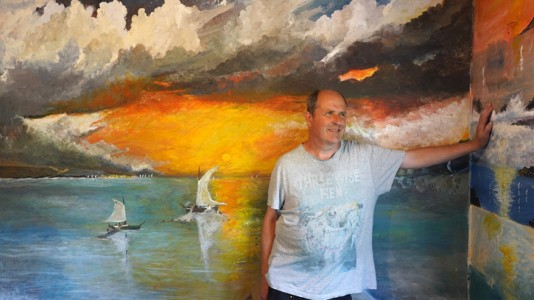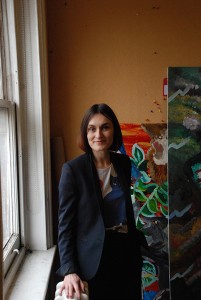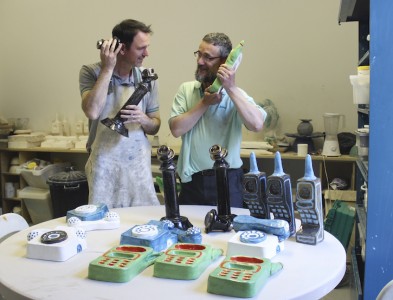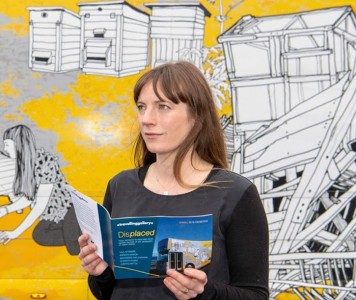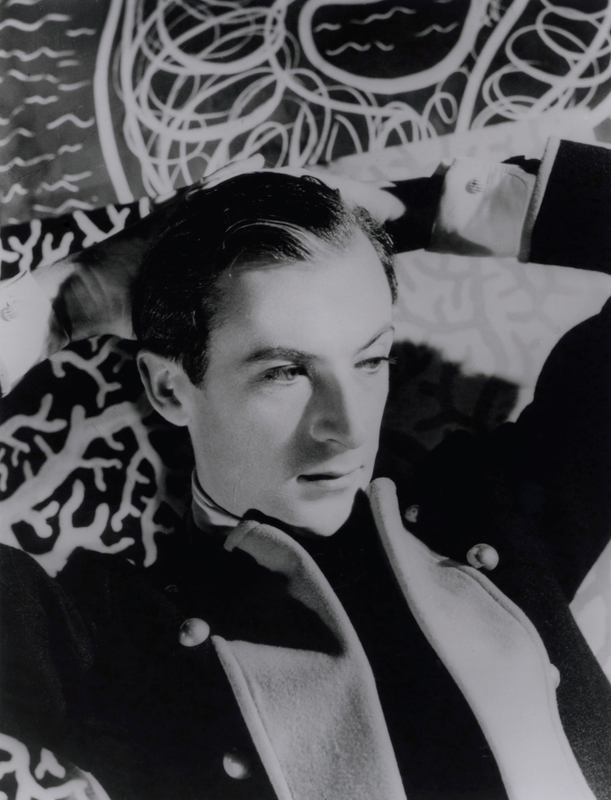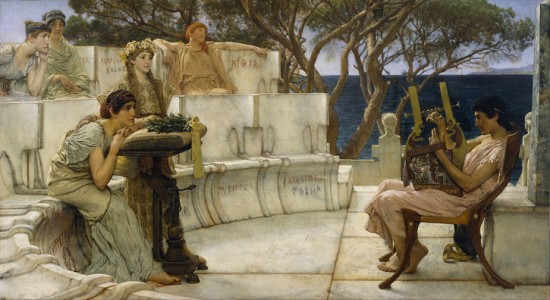For Art UK's 'Being...' series, we take a look at a day in the life of a professional working in the arts, heritage or museum sector.
Dan Vo
What's your role?
I coordinate the LGBTQ Tours at the Victoria and Albert Museum along with Eva, a fellow volunteer. We have a team of about a dozen volunteers who guide people on LGBTQ Tours at the museum when they run on the last Saturday of each month at 4pm. Eva and I tend to call ourselves the co-coordinators, or just the two loco cocos for short!
What's your morning routine?
I proudly don the V&A bright orange volunteer jacket designed by Christopher Raeburn that is adorned with silhouettes of our great treasures. I still haven't worked out what they all are, but I do know one of them is the statue of David, which is where I usually start my LGBTQ Tours for its ability to capture the three reasons our team uses to choose objects for our trails: its creator and the subject have connections to queer history, and most importantly it is recognised by the queer community as being significant to us. Perhaps Oscar Wilde summed it up best in court when asked, 'what is the Love that dare not speak its name?' to which he replied, 'it is such a great affection… as there was between David and Jonathan… such as you find in the sonnets of Michelangelo… that deep, spiritual affection that is as pure as it is perfect.'
Dan Vo
What's your journey to work like?
I have just moved into a place on the District Line and the sunlit trip in from West London is glorious. I usually peek down at the West Six Garden Centre at Ravenscourt to take in the glorious plants they have. Walking in, it's also very difficult to resist the lure of South Kensington Books. An essential stop, though, is for a coffee in the museum café before embarking on the training sessions. For those in the know, you can actually get a seat next to Sappho in the Poynter Room, which is decorated in nineteenth-century blue and white tiles superbly painted by female students of the National Art Training School – a very unusual public commission for women at the time.
What's a typical morning at work for you?
The team of guides and trainee volunteers meet on the day of the tours at midday for Object in Focus sessions. Each month, a different volunteer guide will share an object with the team and facilitate a discussion about its LGBTQ relevance, making it possible for us to all learn about new and fascinating objects and biographies. The sharing is essential because guides are able to choose their own routes that play to their strengths, while also making sure, in their own way, they cover a diverse group of objects in terms of genre and time period. We also ensure there is a representation of a spectrum of gender and sexual identities – indeed the existence of LGBTQIA+ people can be found across place, time and culture. After the session, and before the public tour, often mentors will meet one-on-one with trainees who are still developing their tours to help make sure they pass upcoming assessments.
Dan Vo
What's for lunch?
Our staff and volunteer canteen is run by Benugo and they always prepare something delicious. There's always a vegetarian option and the servings are always very generous! I usually take my meals into the public café in order to enjoy the stately Victorian era ceramics decorating the spaces. Speaking of ceramics, I want to give a quick nod to the work of potter Emmanuel Cooper and the rainbow of test glazes he left in the ceramics gallery. He was an advocate for the arts as well as campaigner for gay rights in the 1970s, and his work is another important pit stop for my tours as it is a good point to consider how art history and queer activism can go together.
What's a typical afternoon like?
It is an absolute thrill to return to the Cromwell Road entrance foyer, with the grand Dale Chihuly chandelier, and see who has assembled to go on the tour for the day. The numbers are usually in excess of a hundred people, so we always have four or five volunteer guides ready to split people into smaller groups. There is a bit of logistical serendipity in that the small groups don't often bump into each other, but I think it also shows clearly how there are so many queer related objects across the seven miles of gallery space that is it is possible to have simultaneous tours launch into the four corners of the museum. Indeed, they take in the four corners of the world too, and I'm very excited about recent additions to tours that include queer interpretations of objects from Japan, China, South Asia and the Middle East that tell of non-binary, non-heteronormative lives.
Dan Vo
What do you do after work?
What better way to celebrate a joyous day than with cocktails! If there is time permitting after a tour, then the Member's Room is my go-to destination for a cheeky Prince Albert (yes, that's the name of a cocktail)! At the entrance of the Member's Room, wiley-eyed punters can spot an exquisite ceramic by Professor Matt Smith, whose practice in queering museum collections is very inspiring and informs my own Birkbeck studies on queer art history. I think it's fitting to end the day by raising my cocktail glass to great people, like Matt, who have helped make it possible for us volunteers to look at the collections with a queer eye and share stories with the public that celebrate diversity, equality and inclusion at the museum. As our first Director said of the collection, it's 'all of this, for all of us'!
Dan Vo, Volunteer Project Coordinator of LGBTQ Tours, Victoria and Albert Museum
Do you work in the arts, heritage or museum sector? Would you be kind enough to share an example of your working day for our 'Being...' series? Please get in touch with Art UK at pitches@artuk.org as we'd love to hear from you.

